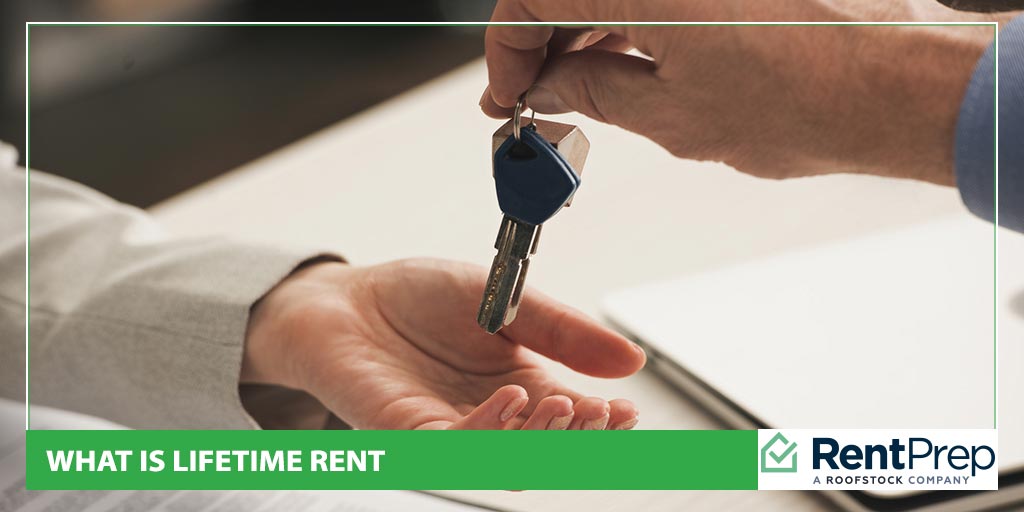
Are you exploring opportunities in the real estate market that cater to retirement communities or assisted living homes? If so, you may encounter a unique contract known as lifetime rent or a life lease.
Lifetime rent, commonly observed in retirement villages and assisted living homes, allows tenants to fully control a home within a supported community while also allowing owners to regulate residency and management.
Understanding the intricacies of a life lease is crucial for landlords. This type of legal contract resembles a freehold lease but imposes more constraints. Before committing to purchasing a property or signing a life lease agreement with a tenant, it’s essential that landlords grasp its nuances.
We’ve tailored our guide to provide helpful insights into lifetime rent, starting from its legal framework within the real estate market. We’ll then delve into the anatomy of life lease communities, explore the various types of life leases, and clarify how they differ from life estates, a common property transfer mechanism in the United States.
Table Of Contents: Lifetime Rent
Life leases are complex legal contracts useful in a limited number of real estate circumstances. Learn more in our guide for landlords.
- What Is Lifetime Rent?
- Example Of A Life Lease Community
- Different Types Of Life Leases
- Difference Between A Life Lease And A Life Estate
- FAQs
- Should You Sign A Life Lease?
What Is Lifetime Rent?

Lifetime rent, or a life lease, is very similar to freehold ownership. A tenant signs a lease with a property owner, known as the sponsor, that has an open-ended termination date linked to the tenant’s lifespan.
During their lifetime, the tenant has exclusive rights to their life lease property, and the sponsor cannot end the lease. Meanwhile, the tenant is responsible for all property taxes, insurance, maintenance, and so forth.
The lease is usually opened with an entrance fee, but the tenant may also be required to pay a monthly fee for certain services.
What happens to the lease when the tenant passes depends on the type of life lease agreement. It might revert directly to the sponsor, or inheritors may be able to sell the property within certain restrictions set by the sponsor.
In some cases, the tenant can also sell their lease while living, again within restrictions set by the community’s sponsor. The life lease agreement will lay out the rules governing the property transfer.
Many life leases will include a spouse takeover clause that allows the tenant’s spouse to take up the lease agreement and live in the property as long as they meet the sponsor’s eligibility criteria. A transfer fee often applies, and the spouse will sign a new lease with the sponsor.
Most properties leased in this manner are located within complexes developed and owned by non-profit organizations, charitable groups, service clubs, or religious institutions. These complexes are often designed to provide services to a specific demographic group, such as seniors. Owners will frequently restrict who can enter into a life lease for one of their properties.
Example Of A Life Lease Community
The most common example of a life lease community is one designed for the elderly. It provides individual living spaces, amenities, and support that members may need.
Typically, sponsors require tenants to apply to become community members and meet specific criteria. In the case of senior communities, there is usually a minimum age limit and guidelines for the individual tenant’s level of independence. There are also very likely to be rules about pets (size and number), smoking, and other things that can affect the broader community.
For the tenant, the experience is like living in a condominium but with additional services provided. Monthly fees are leveraged to cover the cost of these services. Sometimes, a blanket fee covers all services, but you’ll also find subscription models offering tenants the ability to opt in or out of certain services.
You’ll also sometimes see life lease projects focused on specific religious communities or cultural environments. Tenants may be attracted to these projects because they can receive services in a particular language and participate in culturally specific programs.
Different Types Of Life Leases
There are various types of life leases, each of which reflects the initial cost of the lease and how the tenant can end the lease.
Market Value

A market value life lease is when the tenant purchases the lease for more or less the home’s market value. The upfront cost may be lower to compensate for the monthly payments the tenant will make.
In this case, the life lease becomes part of the tenant’s estate, and the tenant is free to sell the lease or pass it on to an heir.
However, any property sale must be consistent with the rules set by the sponsor. For example, if the community has age rules, inheritors may be unable to move into the property themselves. Instead, they may be able to sell the property per the sponsor’s rules.
The sponsor often takes a percentage of the sale as an administrative fee. This amount is often set between 5% and 15%, but the original lease should specify the percentage.
Price Index
With a price index life lease, the sponsor commits to purchase the life lease back from the tenant or their estate at a set rate. The property’s value is determined based on the original amount paid, adjusted by the annual price index.
Sponsors will often buy the home from the tenant over time, providing the sponsor with a regular income during the tenant’s occupancy.
Fixed Value
With this type of life lease, the sponsor agrees to purchase the property from the tenant or their estate for the same amount initially paid.
Declining Balance
With a declining balance lease, the amount the tenant pays to enter the agreement is determined based on the unit’s value and the tenant’s life expectancy. The amount the tenant will receive if they end their lease declines yearly until it reaches zero. This scenario is sometimes described as “prepaid rent.”
Difference Between A Life Lease And A Life Estate
There is often confusion when discussing a life lease versus a life estate. While the former is a type of lease agreement, the latter is a distinct legal arrangement related to estate planning and a way to organize an estate to avoid probate.
With a life estate, a person retains the exclusive right to use their property while alive while passing legal ownership of that property to another person, known as a remainderman. The remainderman will then automatically take full ownership of the property when the first person, known as the life tenant, dies. This is a common strategy in the US to ensure that the next generation receives the family home without going through probate.
Under these conditions, while the life tenant has the exclusive right to live in the home, they cannot sell or take out a mortgage against it without the agreement of the remainderman. The life tenant retains any tax benefits related to homeownership while living.
Lifetime Rent FAQs
Below are answers to frequently asked landlord questions about lifetime rent or life leases.
What happens at the end of a life lease?
What happens when a life lease ends depends on the details of the lease. Ownership of the lease will either become part of the tenant’s estate or revert to the sponsor.
In the former case, the tenant’s estate has the right to sell the lease, but they must do so in collaboration with the sponsor and in accordance with their rules about who is allowed to live in the community. The sponsor often takes a percentage of the sale price as an administrative fee.
What is the Lady Bird Law in Florida?
A life estate deed in Florida is often called a Lady Bird deed. This is when a person chooses to sign over technical ownership of their property to another person but retains the exclusive right to use the property while they are alive.
This is one way to avoid probate when passing on a property as part of an inheritance. The only significant restriction on the life tenant is that they cannot sell or take out a mortgage on the property. They also cannot change the conditions of the deed without the approval of the future beneficiary.
How can I terminate a life estate?
If you change your mind about the details, there is no simple way to terminate a life estate once it has been established. Once signed, it is a legally binding contract and can only be changed if both parties agree.
Can you get a mortgage on a life lease?
Whether a bank will offer a mortgage on a life lease depends on the details of the lease. Getting a mortgage on a fixed-value or declining-value life lease may be challenging but easier on a market-value lease. However, you will likely need considerable equity due to the high fees often charged by sponsors when the property is sold.
Are life leases common in the United States?
Life leases are relatively common in retirement homes and assisted living communities in the United States. However, they are more common in Canada and Europe than in the US.
What is a lifetime mortgage?
A lifetime mortgage is a type of equity release in which you secure a loan against the value of your home and receive the money while still living there. You must usually be of a certain age to be eligible for the lifetime mortgage, and you can receive the funds as a lump sum or several lump sums. The loan only has to be repaid when you die or choose to leave and is generally paid for by the sale of your home.
Should You Sign A Life Lease?
Deciding whether to engage in life leases within your property portfolio entails navigating a rather complex landscape. Each state has regulations governing long-term, non-medical residential services, dictating eligibility criteria and service provisions. You can find the regulations for each state here.
You’d also need to develop a robust financial model. Beyond real estate costs, lifetime rent considerations must encompass service offerings, pricing structures, and profit projections.
It’s worth noting that involvement in such communities often carries emotional weight, with encounters with loss, illness, and even abandonment. While exploring this avenue, ensure it aligns with your genuine commitment to aiding individuals during sometimes challenging life stages.
As a landlord, understanding the intricacies of these life lease contracts is crucial for making informed decisions about property investments. By grasping the regulatory landscape, you can evaluate the feasibility of establishing a life lease community within your portfolio to harness the potential benefits while mitigating the risks.
Note: RentPrep does not provide tax, legal, or accounting advice. This material has been prepared for informational purposes only and is not intended to provide, and should not be relied on for, tax, legal, or accounting advice. You should consult your own tax, legal, or accounting advisors.

